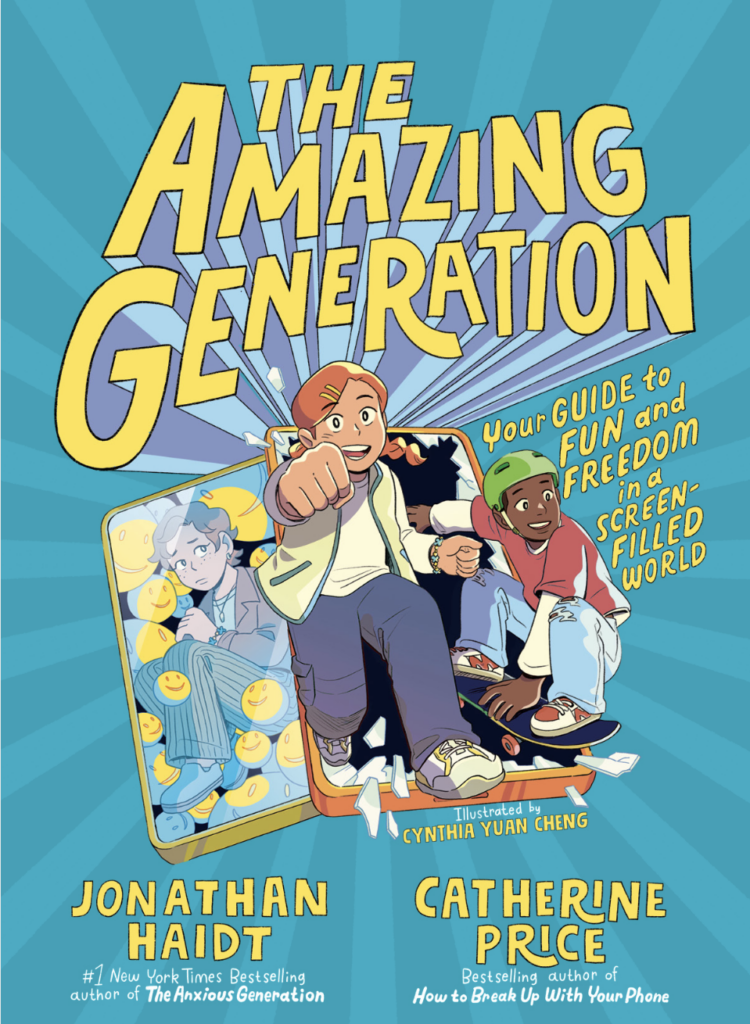






How Can I Let Grow If I’m Constantly Worried About My Kids Getting Hurt?
When my 6-year-old tells the story of the time he had the tip of his finger sewn back on, he does so with the type of gleeful exuberance that has earned him the nickname Gusto. His eyes fill with a slightly naughty glimmer, and he beams as he produces the scar. It’s a story about kids getting hurt, but he loves to show how his fingertip is just slightly crooked if you look hard enough.
When I hear the story though, there is no pride or glee. My stomach still churns as I vividly recall the moment, at the end of a long beach day, when I spotted him being hurried toward me by another parent, who was gripping his finger tightly as blood traced their path in the sand. “It’s bad,” she mouthed to me, over his head.
My mind rushed. I should have never let him down there on his own, I shamed myself. How could I have let him play beyond my reach when I know how accident prone he is?
Welcome to parenting an adventurous kid.
At 6 years old, he was already seasoned at the injury routine. As soon as he got in the car he began to cry, “I don’t want stitches! Can I have staples instead?!”
I knew the routine by now, too, and was relieved when the ER doctor was one we’d seen before. “Hi, August,” she smiled at him when she pulled back the curtain, “How are we doing, Mom?”
The truth was, he was doing better than I was. In the morning, I knew he’d get up and go about his day like nothing happened. I would follow him like a shadow, though, fighting an internal battle between my need to protect him and my desire to let him be independent.
For a free-range kid, injuries can be a part of life. Skinned knees and bruised shins come with the territory. But sometimes the injuries are worse—sometimes, like in the case of my son, the injuries require emergency treatment. They leave scars, not just on kids, but on parents, too.
But why is it that my instinct is to hold my children close, away from the real world, every time trauma comes knocking? Kids getting hurt is naturally going to happen. Why is it so difficult to see that the accidents I often imagine are highly unlikely and that those that do come to pass are really fairly minor in the big picture?
Mothers are hardwired to protect their young.
This is likely a biological effect, especially in the case of mothers. Research shows that even before a mother gives birth, her brain begins to change. The amygdala, which controls emotional reactions, like anxiety and aggression, grows significantly in the weeks leading up to and following birth. This is also an area of the brain with many hormone receptors, making it particularly sensitive to the postpartum onslaught of oxytocin, the love hormone.
That’s a fancy way of saying that mothers are wired to protect their children. Historically, this was an evolutionary necessity to survive, so it should come as no surprise that mothers often spring into action at perceived risks, whether warranted or not.
After a traumatic injury or even the perception of one, it makes sense that maternal instinct may kick into overdrive, producing feelings of anxiety or even driving behaviors that border on obsessive.
Kids getting hurt can make them seem so fragile.
After my son was born, he was diagnosed with a bacterial infection in his bloodstream. One night when another blood culture came back positive, the doctors identified the bacteria as a resistant form of staph. Suddenly I was being told that they couldn’t manage his illness there and that an emergency special care transport team was on their way to rush him to the big children’s hospital in the city. For years, every time he got sick, my mind would drift back to the image of my baby strapped down to the gurney.
When he came home at 1 month old, I couldn’t shake the feeling that life, his in particular, was just so fragile. I snugged his bassinet up next to the side of my bed. Then I slept most nights with a hand on his chest. I woke repeatedly in a panic—is the baby alive? Is he breathing? I brought him to the doctor again and again for symptoms I couldn’t explain.
I worried that as he grew older, I’d never be able to let him out of my sight. Eventually though, as he became more independent, my grip loosened. He once fell off the toddler climber in our backyard and got a goose egg on his forehead. Another time, he ate grass at the park and threw it up. He also face planted running down our street, and he survived. Slowly, I learned to do the same, but it wasn’t an easy process.
Children are most likely to be injured at home.
My background is in the social sciences, so it made sense that I would arm myself with data to assuage some of my anxiety. I wanted to know where my son was most likely to get hurt. Surely if he wandered off in the woods with his friends, one bad choice would lead to another, and someone would fall out of a tree or take a rock to the face, right? If I let them go to the corner store, would he get hit by a car?
How could I let him flourish but also keep him safe? I didn’t want to be a helicopter parent, but I would if it meant I could stop my kids from getting hurt and protect him from serious injury. It’s kind of like how we say “be careful!” all the time, falsely thinking we’re keeping them from injury.
This isn’t what the data indicates, though. According to the CDC, the number of children dying from injury has actually decreased by 30% over the last ten years, and it continues to decline. The most likely place for a child to be injured is not playing in the woods, walking to the store, or even at the beach. Most childhood injuries actually happen at home or in motor vehicles. This means that proximity to caregivers isn’t actually a mitigating factor in childhood injuries.
Simple precautions, not constant supervision, protect children from injury.
Are childhood injuries still a likely occurrence? Absolutely. In 2015, nearly one in five children in America visited the emergency room at least once. Many children, like my son, required more than one visit. Nearly 97% of children seen in the ER were treated and released, with the other 3% being admitted. Fewer than 0.1% resulted in a fatality.
The leading causes of injury in children aged 1–19 years are preventable. They include bicycle crashes, drowning, falling, and motor vehicle accidents. Luckily for us, helicopter parenting isn’t among the primary defenses recommended to ward off these injuries. Instead, experts point to a few key safety tips.
Bike helmets, pool fencing, window guards, and appropriate child-safety restraints in the car are all proven and reasonable measures to stop kids from getting hurt. These simple, empirically proven safety precautions help prevent or minimize injury to millions of children each year, and they aren’t difficult to monitor or install, nor do they inhibit our children’s ability to explore independently.
Still, will these preventative measures change generations of biologically-based mom anxiety? Probably not, but they will certainly help at least this mom sleep a little bit better at night. I’ll feel good knowing that I’ve taken reasonable precautions to safeguard my kids. Will there be more ER trips in our future? I’m sure of it, but hopefully their greatest lasting legacy will be just another story for my son to tell.




Comments are closed for this article.